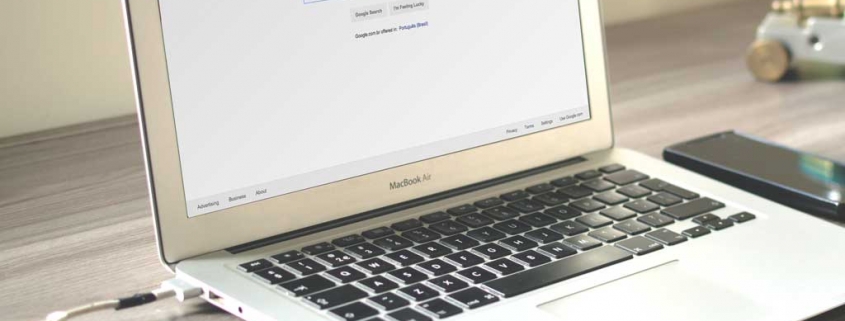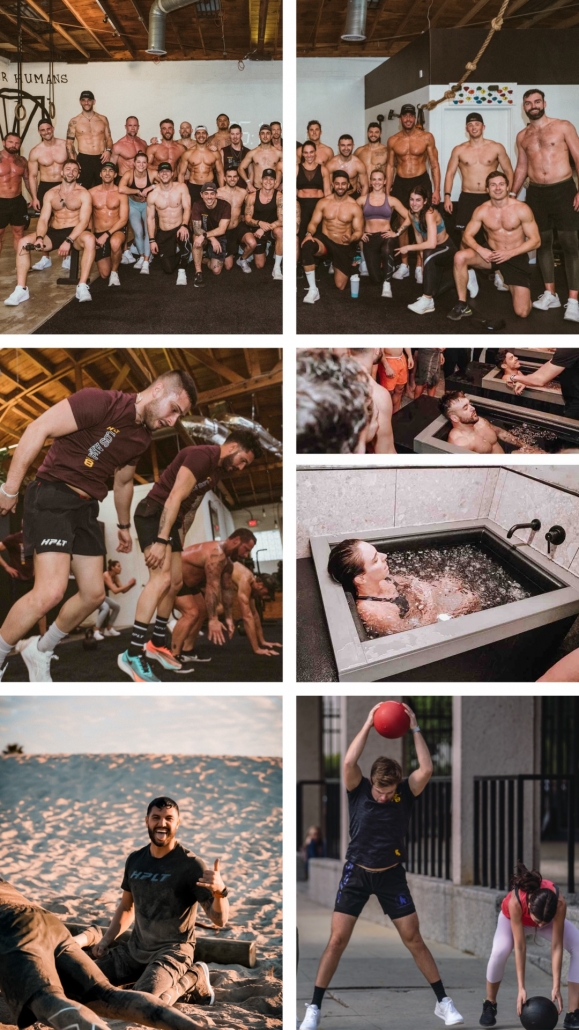Escaping the cold and out into the sun. Nowadays, it doesn’t matter whether you book your next winter break at the travel agency around the corner, or on your mobile phone. In January’s SEO News, we will discover how, with Google’s help, we will soon be sending ourselves jet-setting off into the distance, and why you should never underestimate supposedly harmless hoaxes.
Travel agencies – fasten your seatbelts
This column has often spoken about Google’s vision of an omnipresent machine that provides information, solutions, and comfort. Measuring the world in entities, to provide the basis for a real-time classification of all individual sensibilities, is a project whose scope could hardly be larger. In order to be able to know and serve the needs of each and every individual, however, as a company you have to get pretty close to people.
It’s safe to
say that 2019 was not an easy year for the travel industry. Not only did the
insolvency of the British tour operator Thomas Cook send shock waves through
the industry and cost many jobs, but “flight shame” and “overtourism” have been two social trends that have
really put the brakes on growth within the sector, rather than strengthening
it.
The
traditional travel agency, which has for decades been the administrative
headquarters of our holiday dreams, has experienced a small uptick, despite the
adverse conditions. Although their numbers have been steadily declining for years, physical travel
agencies have recorded a small but constant increase in turnover over the past 15 years. The
reason for the success of travel agencies in the age of online bookings lies in
the comprehensive, personal advice they provide and the transparency of prices
and fees for customers. Both of these factors are forces that the online travel
business has not yet been able to overcome.
Against a background of changing travel
behaviour, moving away from package tours to individual holidays, all market
participants seemed to have settled down comfortably into their respective
segments of the almost 800 billion US dollar global travel market.
This column has often spoken about Google’s vision of an omnipresent machine that provides information, solutions, and comfort. Measuring the world in entities, to provide the basis for a real-time classification of all individual sensibilities, is a project whose scope could hardly be larger. In order to be able to know and serve the needs of each and every individual, however, as a company you have to get pretty close to people.
As humankind’s
entirely natural digital partner, the Search channel is virtually predestined
for such a venture. A large number of us think nothing of trusting the input
field of a search engine with our most intimate secrets, greatest fears, and
most hidden passions. For companies, webmasters,
and SEOs, though, the challenge of generating genuine value from this social
potential is growing ever greater. Paid ads, answer boxes as featured snippets,
and the beloved “People Also Ask” questions – each of these is
displacing the classic, organic click result from the top spots on the search
results page. This is the other side of Google’s metamorphosis from a gateway
to a portal for all of life’s questions and situations.
Google Travel as the new gatekeeper
A golden exception to these current developments is local search. Freshly fortified with an algorithm update for better recognition of local queries, and thanks to its prominent display featuring area maps, a route planner, and user reviews, the so-called “Local Pack” is evolving into the most important piece of inventory that the search engine from Mountain View has to offer stationary trading so far. As an electronic business card, however, the Local Pack has much more to offer besides. Branch operators have the option of chatting directly with potential customers, submitting individual questions and answers, and publishing upcoming events and company news as so-called “posts”. The “Mybusiness” service continues to provide the interface for this. As time goes on, however, local interactions with real people are set to become more important for rankings, as even in local searches, spam isn’t uncommon.
But all that
is about to change… After several acquisitions, iterations and experiments,
Google is starting to expand its flight and hotel search into a comprehensive,
personalised travel consultant and planner. The new travel search tool “Google
Travel” has been live in the US since the start of the year and has received positive initial reactions from
both the press and users alike.
Bookings are
still made on the travel providers’ own websites, but as a gatekeeper Google
will certainly soon be monetising its dominance. Last spring, SEO veteran Rand
Fishkin had alreadyexpressed his regret regarding this to the start-ups and online
travel industry employees present at SMX Munich.
A few months earlier, on the other side of the
Atlantic, a small website called Touringbird, an individual travel planning provider, which could not even be found
via organic search, was launched. As it turned out a year later, the supposed
start-up was in fact an experiment by Google’s incubator, Area 120. The
site, which has since been discontinued and merged with Google Travel, allowed
the search giant to test the application of its wealth of data in combination
with the use of artificial intelligence under market conditions.
A golden exception to these current developments is local search. Freshly fortified with an algorithm update for better recognition of local queries, and thanks to its prominent display featuring area maps, a route planner, and user reviews, the so-called “Local Pack” is evolving into the most important piece of inventory that the search engine from Mountain View has to offer stationary trading so far. As an electronic business card, however, the Local Pack has much more to offer besides. Branch operators have the option of chatting directly with potential customers, submitting individual questions and answers, and publishing upcoming events and company news as so-called “posts”. The “Mybusiness” service continues to provide the interface for this. As time goes on, however, local interactions with real people are set to become more important for rankings, as even in local searches, spam isn’t uncommon.
A recent patent
shows that, in addition to online check-ins and reviews, Google also wants to
incorporate offline user behaviour into its quality evaluation of local companies. According to the document, movement
patterns of individual users or EXIF data from uploaded photos are to allow
conclusions to be drawn about the quality and relevance of local listings. This
leaves a lot of room for imagination as to how conventional SEO work at the
computer may also shift into the real world in years to come. In addition to
optimising website technology, structure, and content, clever strategies for
obtaining good signals from offline searches are now set to be in demand as
well. Before long, the free cup of coffee offered in exchange for a longer stay
at the corner shop may very likely count among the modern search engine
optimiser’s trusted tools.
Successful linking of different Google services
To be sure of ending the year with one more compelling overview, let’s round off the last SEO News of 2019 with a detailed look at the newest mobile phone camera to hit the market. Here we encounter a cold, electronic eye; behind it, no didactic supercomputer like the HAL 9000 of Stanley Kubrick’s “2001: A Space Odyssey”, but instead the new addition of a search engine. Already integrated into the current generation of Android mobile phones and driven by such enterprises as Microsoft, Google, Amazon, and Pinterest, in the coming year we’ll see that the fastest connection between the user’s brain and their wallet isn’t the ear or mouth, but the eye.
Google
actually laid the foundations for its development work a few years earlier with
its app Google Trips, which has also now been discontinued. The result
they are now presenting is a tool that combines personalised searches with
historical and real-time data to offer the entire spectrum of individual travel
inspiration and planning using three simple tabs.
Broken down
into “Where to stay”, “When to visit” and “What you’ll pay”, at first glance
all the basic questions relating to travel are presented in an easily accessible
and comprehensive manner. The comprehensive and familiar information from
Google’s local search for almost any location around the globe can not only be
marketed within the immediate geographical area, but can now be directly
monetised as added value in travel planning. The company deliberately places
the transparency of the final price at the centre of its marketing
communication in order to distinguish itself positively from the competition.
According to a study by EMarketer, despite ecological and social headwinds, the
global travel market will be reaching the trillion dollar mark in just two
years’ time. This means that the pie is getting bigger, but who gets a slice is
still up for grabs.
To be sure of ending the year with one more compelling overview, let’s round off the last SEO News of 2019 with a detailed look at the newest mobile phone camera to hit the market. Here we encounter a cold, electronic eye; behind it, no didactic supercomputer like the HAL 9000 of Stanley Kubrick’s “2001: A Space Odyssey”, but instead the new addition of a search engine. Already integrated into the current generation of Android mobile phones and driven by such enterprises as Microsoft, Google, Amazon, and Pinterest, in the coming year we’ll see that the fastest connection between the user’s brain and their wallet isn’t the ear or mouth, but the eye.
The proliferation
of technologies that enable open searching with the help of visual information
is now also underway in Europe and North America, several years after Chinese search machines like Alibaba and Baidu first made important
pioneering achievements in this area. Through advancement in the development of
artificial intelligence and the gathering of ever more extensive volumes of
data, it’s becoming increasingly easy for users to perform search queries that
would be difficult to express assisted only by text or even speech.
The most
important driver for visual search, however, will turn out to be that optimal
searching is the ideal partner to e-commerce. With the launch of its visual
search tool, US fashion chain Forever 21 has succeeded in increasing its
average shopping cart value by approximately 20%. Inspiration portal Pinterest recently
announced that around 80% of its users begin their
shopping session with a visual search. The shortening of the customer journey in the young target group of 18 to
34 years is a powerful factor in the battle for online sales. Soon enough, the
path from “I want” to “I have” will be just a camera click
away.
From the point of view of search engine optimisation, this means it would be advisable to extend content strategies by a visual dimension, and to optimise technical deployment of picture and video files within digital assets. 2020 will not only see us experience the proliferation of visual searches, however, but also witness the first steps on the road to a multimodal search matrix consisting of text, speech, camera input, and (offline) context. That’s why we advise you to stay on the ball, keep reading our little column, and, most importantly, have an excellent start to the new year.
Duck Duck Go buys into Android
With almost
90% of the market share, Google’s Android dominates the smartphone operating system market
worldwide. Hard-wiring your browser to your own search engine gives you quite a
valuable asset. The EU’s competition watchdogs have now also realised this,
imposing on Google a fine of around five billion US dollars in March 2019. In
addition, the company was required to provide users with a choice of search
provider when setting up their mobile device, much in the same way as Microsoft
had to make alternatives to the Internet Explorer browser available in the
Windows 7 operating system in 2009.
Google has
now successfully fulfilled this obligation with the help of an auction, much to
the disappointment of the search engines participating. Three selections were auctioned in a total
of 31 EU markets. The bidding was on the click price that the third-party
provider would be prepared to pay Google for each search action.
Duck Duck Go comes out on top
The result of
these auctions now reflects neither the market position nor the quality of
Google’s alternatives. For example, Microsoft’s successful search engine Bing
was only used in the high-revenue UK. In Germany, new Android users will have
the choice between the US providers Duck Duck Go, InfoSpace and GMX-Suche
from Germany’s United Internet group.
The search engine Duck Duck Go, which
specialises in the data protection, was the biggest winner in the auction and
was used immediately in all markets. Despite criticism from participating
companies, this procedure has not yet been called into question by the EU. Even
though the auction procedure is a proven method of ensuring fair access to a
limited market, the demand for a permanent click price speaks volumes about our
beloved monopolist’s understanding of the market.












